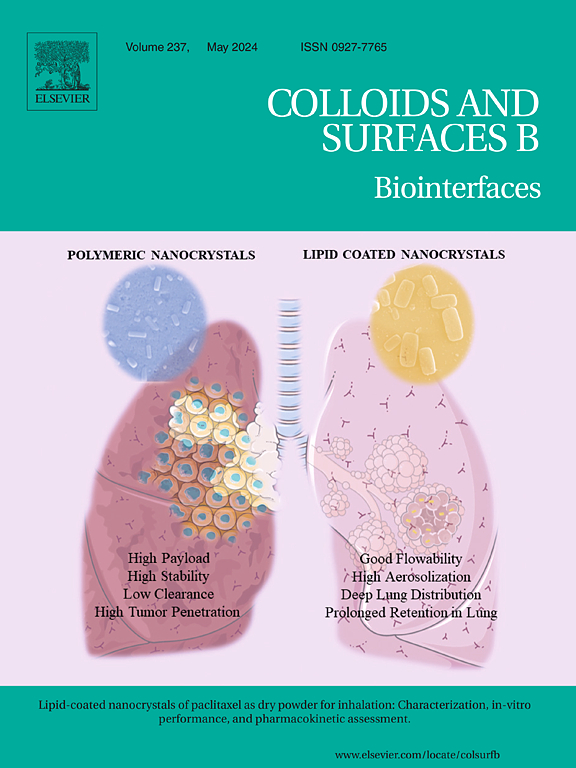A multifunctional semi-interpenetrating polymer network hydrogel dressing for wound healing
IF 5.4
2区 医学
Q1 BIOPHYSICS
引用次数: 0
Abstract
Hydrogels have exhibited significant application potential in the field of new wound dressings due to their unique physicochemical properties and biological functions. However, traditional hydrogels possess limitations regarding mechanical properties, adhesion, and the promotion of wound healing. Herein, a multifunctional polyvinyl alcohol-tannic acid/polyacrylamide-polydopamine (PVA-TA/PAM-PDA) hydrogels are developed. By combining an amide-rich crosslinked polyacrylamide (PAM) network with a hydroxyl-rich linear polyvinyl alcohol (PVA) structure, a semi-interpenetrating polymer network (semi-IPN) is formed, which serves as a scaffold to enhance mechanical properties. The incorporation of tannic acid (TA) and polydopamine (PDA) into the semi-IPN framework can enhance cell affinity and tissue adhesiveness. This multifunctional composite hydrogel demonstrates outstanding physical and mechanical properties, including excellent elasticity and toughness, stable rheological properties, and favorable swelling properties. It also exhibits strong adhesive properties to various materials and skin, and can promote tissue regeneration and wound healing. This study offers novel ideas for the development and application of multifunctional composite hydrogel wound dressings, and the PVA-TA/PAM-PDA hydrogel shows great promise for clinical applications as an innovative wound dressing.
求助全文
约1分钟内获得全文
求助全文
来源期刊

Colloids and Surfaces B: Biointerfaces
生物-材料科学:生物材料
CiteScore
11.10
自引率
3.40%
发文量
730
审稿时长
42 days
期刊介绍:
Colloids and Surfaces B: Biointerfaces is an international journal devoted to fundamental and applied research on colloid and interfacial phenomena in relation to systems of biological origin, having particular relevance to the medical, pharmaceutical, biotechnological, food and cosmetic fields.
Submissions that: (1) deal solely with biological phenomena and do not describe the physico-chemical or colloid-chemical background and/or mechanism of the phenomena, and (2) deal solely with colloid/interfacial phenomena and do not have appropriate biological content or relevance, are outside the scope of the journal and will not be considered for publication.
The journal publishes regular research papers, reviews, short communications and invited perspective articles, called BioInterface Perspectives. The BioInterface Perspective provide researchers the opportunity to review their own work, as well as provide insight into the work of others that inspired and influenced the author. Regular articles should have a maximum total length of 6,000 words. In addition, a (combined) maximum of 8 normal-sized figures and/or tables is allowed (so for instance 3 tables and 5 figures). For multiple-panel figures each set of two panels equates to one figure. Short communications should not exceed half of the above. It is required to give on the article cover page a short statistical summary of the article listing the total number of words and tables/figures.
 求助内容:
求助内容: 应助结果提醒方式:
应助结果提醒方式:


